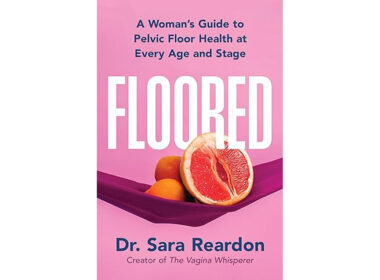As more women look for sustainable and environmentally friendly options for healthcare and wellness, menstrual cups are coming to the fore as an alternative to disposable tampons and sanitary napkins. Though they’ve been around since the 1930s, the first manufactured menstrual cups for the United States appeared in 1987.
Menstrual cups are typically made of medical-grade silicone or rubber, and can drastically change the way you experience your period—from eliminating emergency runs to the store to alleviating cramps.
How Menstrual Cups Work
A menstrual cup is inserted into the vagina in a similar fashion to that of a tampon. It is placed as far into the body as a tampon, but is generally wider in diameter, in order to create a seal that will prevent leakage. It may take some practice to get it in a comfortable spot, but remember, you had to do the same when you learned to use a tampon.
Your local pharmacy likely has a brand or two on the shelf for purchase, but there are more than forty brands on the market, with most offering at least two or three sizes of cups. When you’re choosing a cup, you’ll need to keep in mind your age, whether or not you’ve given birth, your activity level, and your typical flow. This quiz at Put a Cup In It can help you get started.
You can insert the cup before your period starts, to catch the first part of your flow. If you are charting your cycle with a Fertility Awareness-Based Method, you will know when your period is coming because you will have detected ovulation beforehand via your body’s fertile signs such as cervical fluid.
Once your period starts, you can leave the cup in for up to twelve hours. It’s important that your hands are clean when you take it out to empty it and that you wash it with soap and water before reinserting, if possible. If you’re in a public restroom and that’s not a possibility, you can simply dump the cup’s contents, wipe the cup with toilet paper, and reinsert it.
Because you don’t want to spill the cup, learning to remove it can also take some practice. You may need to pinch or spin it to release the suction or use your pelvic floor muscles to help remove it from your body.
On heavier days, you may need to empty the cup every couple of hours, or wear a cup with a larger capacity. Some women choose to wear a pad in conjunction with their cups for extra protection during the day or overnight. While a cup costs about $30-40, with proper care, some can be used for as long as 10 years.
How Menstrual Cups Can Help with PMS
Some women notice their menstrual cramps become more painful when they use tampons. Manufacturers are not required to disclose what’s in the tampons they sell, so it’s impossible to know how much of the pesticide used to treat the cotton as it grows or the dioxin produced when the fibers are bleached remain in your product. If they’re there, these would be trace amounts, but they could build up in your body over time.
While your body might be absorbing these chemicals, your tampon is absorbing everything that comes its way—including the good bacteria that keeps your pH balanced. When this happens, you are susceptible to irritation and even infection, which could cause a host of other symptoms.
Removing tampons from the equation eliminates these risk factors. Menstrual cups are not known to introduce new chemicals, and all that they remove from your body is the menstrual flow that they collect. For women who experience an increase in the severity of PMS symptoms such as cramps when using tampons, a reusable cup could be a great alternative.
How Menstrual Cups Improve the Lives of Women in Developing Countries
So we’ve covered how using menstrual cups can save money, decrease the amount of household waste we produce, and improve PMS symptoms. In many parts of the world, they’re doing even more: they’re helping young women gain and maintain their independence.
For women in developing countries, the stigma around menstruation remains a serious and deep-seated barrier on personal, academic, and professional levels. If you’ve seen the Netflix documentary, Period. End of Sentence, set in rural India, you know what I mean (if not, go watch it now).
Without an understanding of what’s going on in their bodies, girls can’t talk about a natural aspect of their femininity. Without the financial means to purchase sanitary pads or menstrual cups—if they’re even available—girls miss so many days of school that they often end up dropping out. In Kenya, girls can miss up to 20 percent of the school year, because they either didn’t have the ability to buy pads, didn’t want to risk leaking, or didn’t want to find a place to change their pads during the day.
When Femme International started educating East African women on menstrual health and hygiene and distributing menstrual cups in the region, things changed for the girls. Now, they can stay in school all month long. This means they can continue going year after year, and work toward possibilities that had been impossibly out of reach for far too long.
We at Natural Womanhood know very well that understanding how your body works is empowering. You don’t need to introduce chemicals to live your best life or suffer through PMS unaided every month—there are natural means that come with fewer side effects and costs. It all starts with understanding your cycle with a Fertility Awareness-Based Method (FABM) and equipping yourself to make more informed decisions about your cycle health. Along the way, you’ll learn that it’s possible to manage the more challenging times of the month with natural solutions.











